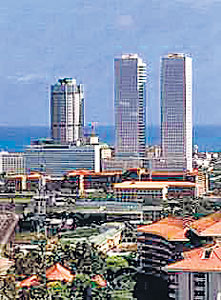Bank of Ceylon boasting as 'Bankers to the Nation,' has been in existence for 70 years. It was on July 26, 1938 that the first meeting of the Board of Directors was held after the Bank was established under Ordinance No. 53 of 1938. The Bank was ceremonially opened by Governor Sir Andrew Caldecott at 41, Bristol Street, Colombo Fort.
A noteworthy event took place 23 years after the Bank was established. On July 27, 1961, legislation was enacted for the nationalisation of the Bank in terms of the Finance Act No. 65 of 1961 presented by the Minister of Finance, Felix Dias Bandaranaike.
Thus the year 1961, is significant in Sri Lankan banking history for two reasons. One was that the first indigenous bank in the country was nationalized. The second was that the People's Bank was set up to diversify and develop the rural sector which included the expansion of the
cooperative movement.
Another significant
factor was that the Finance Act nationalizing the Bank of Ceylon did not permit Sri Lankans to open any new accounts in the foreign banks operating in the island.
By the time Bank of Ceylon was nationalized, it had established itself firmly, gaining a wide reputation for general reliability. It had attained a position of strength and had brought about a vast growth in banking consciousness among the indigenous
population.
After the formation of the Bank in 1938, the first outstation branch was opened on August 1, 1941 in Kandy. The following year the first branch in the city was opened in Pettah, the hub of commercial activity. The Foreign Department to transact business with foreign countries was opened in 1946 and a London branch was set up three years later.
Four years before the Bank was nationalised, the first chairman Sir Ernest de Silva, a great philanthropist died. He served as chairman from 1938 – 57.
The nationalisation of the Bank was in line with the Sirimavo Bandaranaike Government's political thinking at the time, namely that the economy could be transformed rapidly and a high rate of economic development achieved by the Government taking over the development process. State ownership was extended to basic industries, banking, trade and commerce.
With the nationalization of the Bank, all ordinary shares of the Bank were vested in the Government and the private shareholders were compensated on the basis of the prices paid by them for the shares.
A new Board of Directors consisting of six members was appointed. Five of them were appointed by the Minister of Finance and the sixth was the Secretary to the Treasury.
Over the years, Bank of Ceylon has expanded its network. Today it provides a wide range of services through 303 local and three overseas branches (London, Male & Chennai) and the Off-shore Banking Unit.
|

